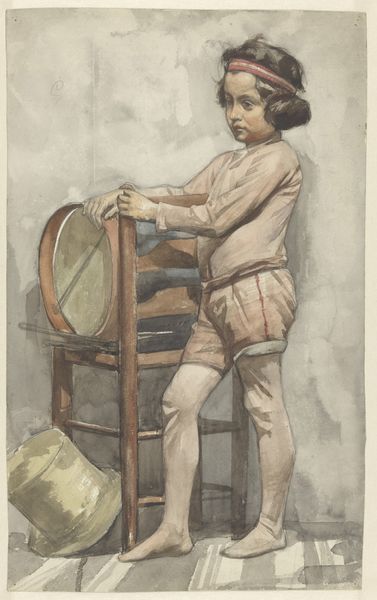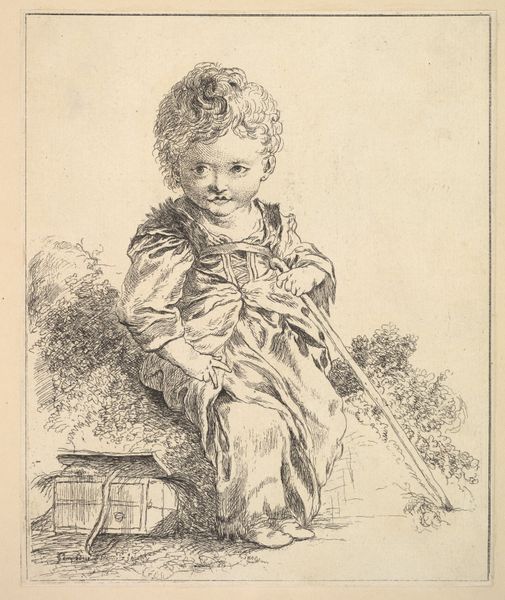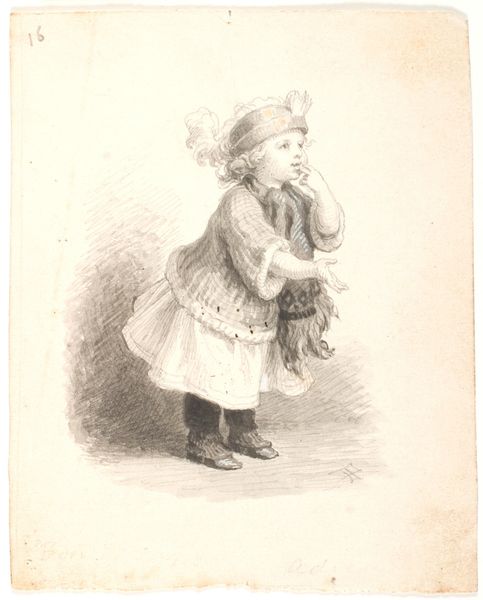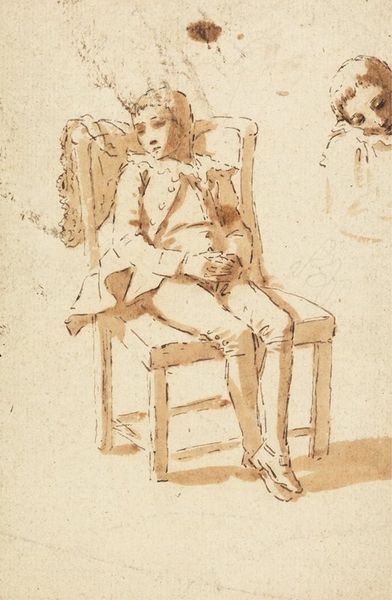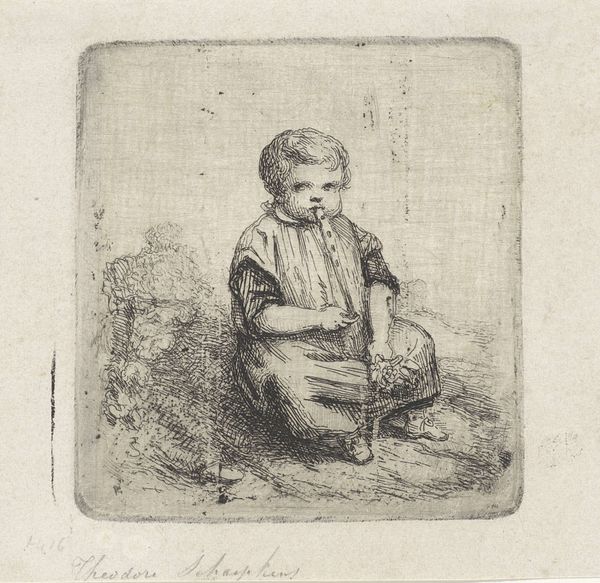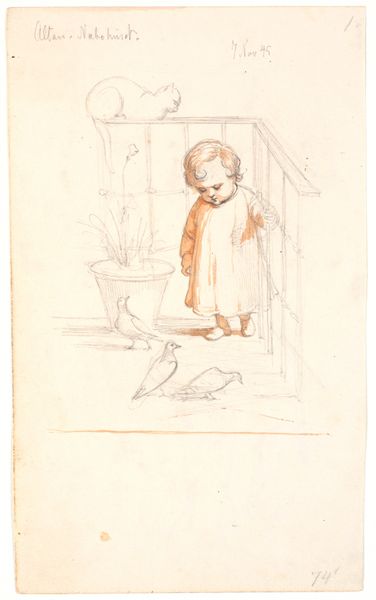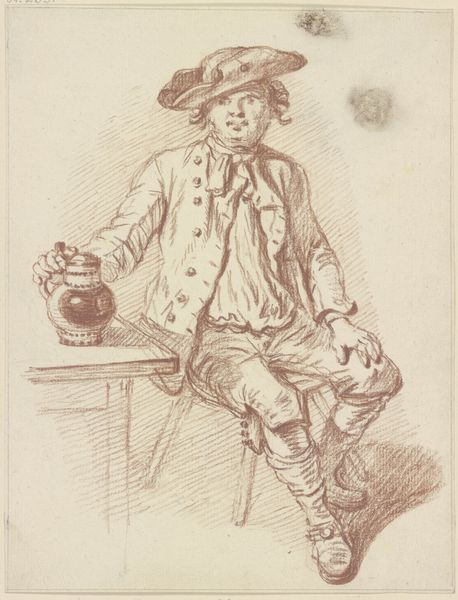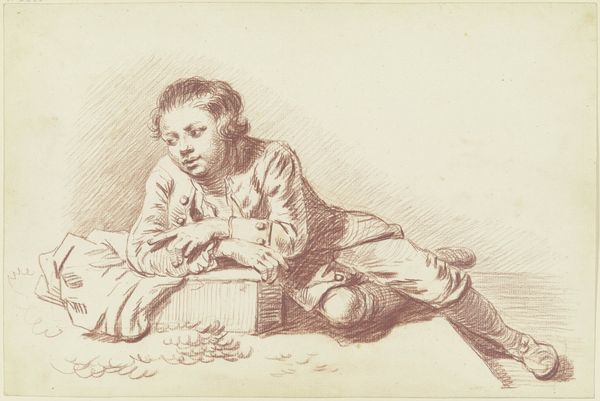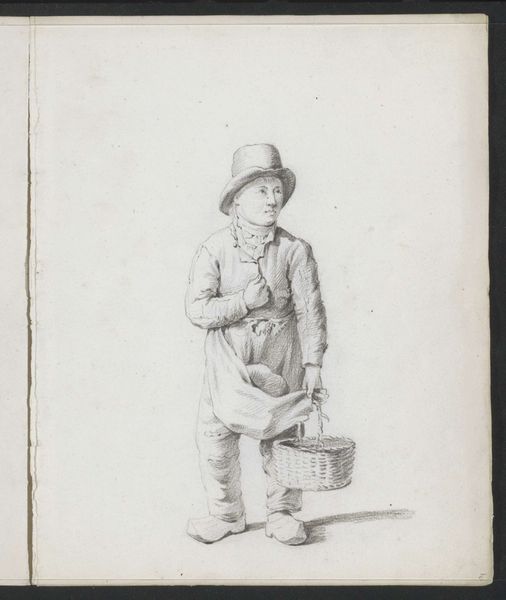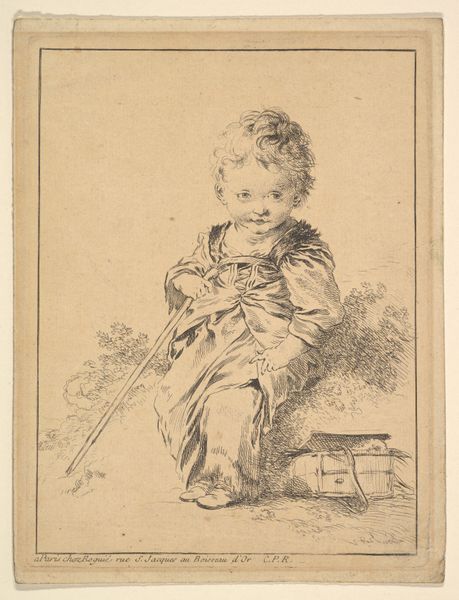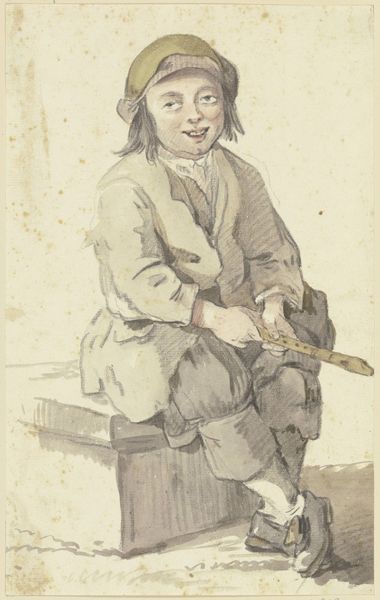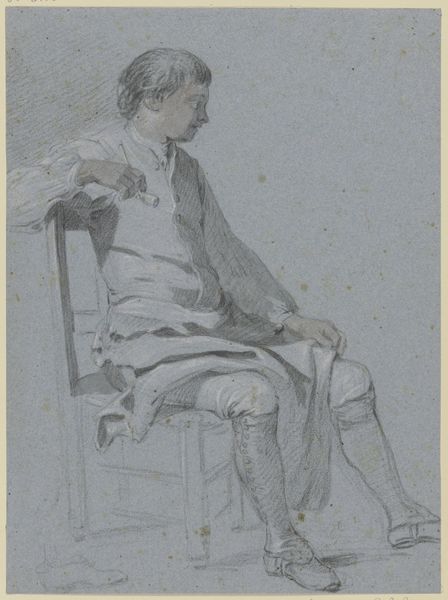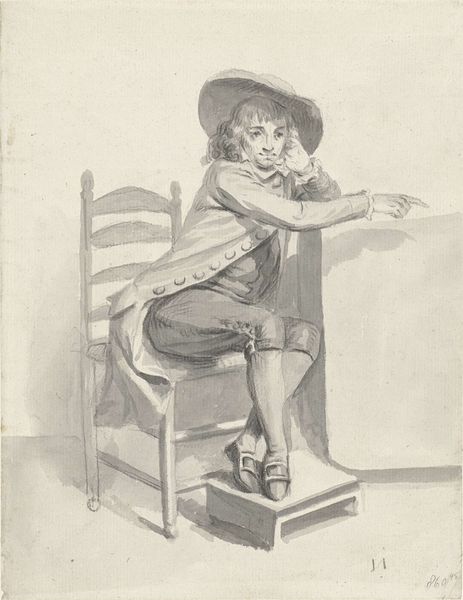
drawing, paper
#
portrait
#
drawing
#
pencil sketch
#
paper
#
character sketch
#
genre-painting
#
realism
Dimensions: height 221 mm, width 192 mm
Copyright: Rijks Museum: Open Domain
Curator: Welcome. Before us is August Allebé's "Studie naar Gerard," created in 1852. It’s a work on paper employing drawing media. Editor: My initial impression is of understated melancholy. There's a muted quality to the color palette, despite what appears to be the joyful trappings of childhood—a drum, a toy horse. The boy’s expression doesn’t communicate exuberance. Curator: The technique employed focuses on contour and subtle tonal gradations, primarily through the economical use of line and wash. The composition, while seemingly straightforward, directs the gaze carefully through the triangulation of the figure and objects. Editor: Considering the historical moment, the mid-19th century saw increasing shifts in understandings of childhood. I see that reflected here—a move away from simple sentimentalization towards capturing the complex interiority of children as individuals. Look at the way the toys are almost props that stage the boy’s…performance? Curator: Interesting. The work invites one to reflect on binaries and structures, perhaps even deconstruct them: adult/child, play/seriousness, exterior/interior, representation/reality. These relationships are key to interpreting the artwork as a structured entity. Editor: Precisely. The context enriches that further; Allebé lived and worked within specific sociopolitical constraints and opportunities that shaped his portrayal of Gerard and his experience as a subject within a bourgeois setting. Did Allebé intend to disrupt conventional expectations around innocence? Curator: Perhaps. The artist may have been engaging with the contemporary understanding of psychological realism. Yet, viewing the work primarily through its structure still allows us to examine those contextual questions with deeper intentionality. Editor: Agreed, that balanced approach ensures we attend to both the formal and the political elements, creating richer narratives that recognize the power relations in representation. The child's dress, his pose; there are stories of class, gender, and age at play. Curator: Yes, it is indeed a rewarding piece for its technical sophistication, inviting a detailed formal analysis that opens the avenue for interpretations. Editor: And for how it whispers about a very specific lived experience, expanding its reach beyond just technique. I'll keep these dimensions in mind next time.
Comments
No comments
Be the first to comment and join the conversation on the ultimate creative platform.
